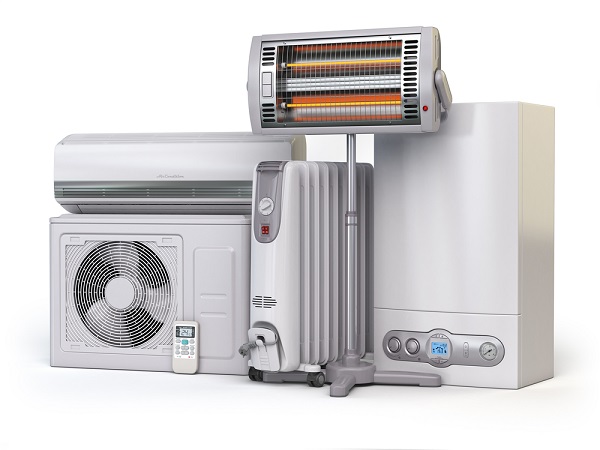Winter is here, and it’s time to think about heating your home. If you’ve bought an electric heater, you might be worried about the high electricity bills. That’s why many people look for the cheapest electric heater to run.
In this article, we’ll show you the best electric heaters that are cheap to run. You won’t have to stress about your electricity bill when using these heaters.
Back in the day, people used fireplaces. But now, electric heaters are a better choice because they are easier to use and cost less to run.
Let’s take a look at six electric heaters that are good for your wallet. They are not just cheap to buy but also cheap to run, saving you money in the long run.
Cheapest Types of Electric Heaters to Run
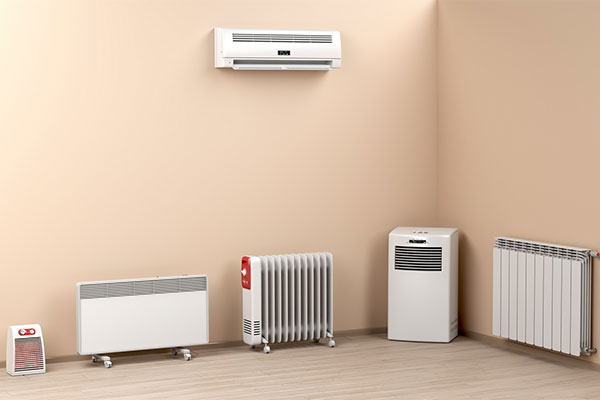
There are 6 variants or types of electric heaters that are cheaper to run. In a nutshell, the 6 cheapest heaters to run are as follows:
- Infrared Heaters: These heaters are the cheapest and the most reliable ones. Low Wattage is a prime attraction.
- Oil-Filled Heaters: They are super-efficient, silent & produce more heat (when compared to other heaters for the same amount of electricity).
- Ceramic Heaters: They are simple to set up & use. These heaters are also known as standard electric heaters!
- Space Heaters: These heaters are a slight modification of the ceramic heater.
- Storage Heaters: These heaters work on the principle of stored energy. If used properly, then it can be one of the cheapest heaters to run.
- Fan Heaters: They are portable & super easy to handle. This electric heater runs on the principle of convection.
Note: These types of electric heaters are shortlisted considering a generalized tariff of electricity. Depending upon the price of the electricity at your place, you need to make a smart decision of your own. Of course, this article will help you!
So, without any further ado, let’s dive deep into the world of electric heaters.
1. Infrared Heaters
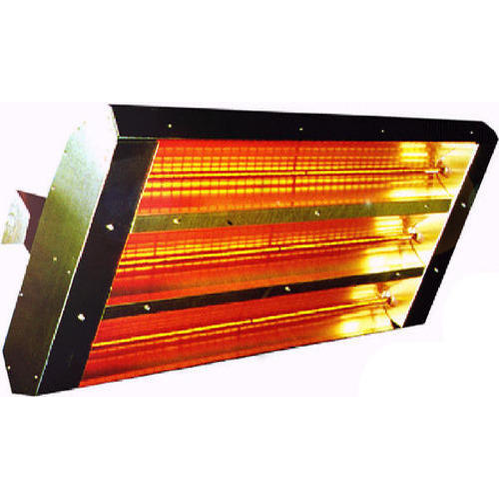
They are also known as radiant electric heaters. These are one of the cheapest heaters to run, as it works on the principle of radiation. They work on the same principle of “Earth receiving heat from Sun.” The major difference being the source of heat. These infrared heaters differ in the mode of transmission. Infrared waves are invisible in nature whereas the warmth provided by sunlight comprises visible light too.
How Do Infrared Heaters Work?
Infrared heaters work on the principle that is based on radiation. They emit infrared rays that heat the objects in their path. Most of the heaters and even fireplaces tend to heat the surrounding air. Hence, infrared heaters are more effective in heating as they directly heat the objects. Solids absorb more heat as compared to other states of matter (Liquid & Gases).
The additional benefit due to this type of heating is that the objects which receive the heat can further dissipate the heat. Our skin and clothes absorb the radiated heat. When the infrared rays are bombarded it indirectly increases the heat. Once the heating occurs, the hot air rises above the colder air due to the differences in density.
They are cost-effective because the objects are directly heated instead of heating air. There is a reduction in the heat losses that would have occurred if the heat would have transmitted through the air. Moreover, the infrared rays aren’t harmful to the skin.
Two protection functions are a must for an infrared heater. The first one is the overheat function that shuts down the heating mechanism in case of any overheating. The second function is called the trip-over protection function. It shuts off the infrared heater when it breaks down accidentally.
Advantages of using an Infrared Heater
Infrared Heaters are the cheapest heaters to run. Moreover, their work is highly efficient.
The advantages are as follows:
- As it does not heat the air, it is energy efficient.
- It directly provides heat to the body; moreover, it indirectly heats the air.
- Infrared rays do not cause any harm to the human body. They are safe to use.
- They are readily available in multiple options like wall-mounted, ceiling & portable ones, and many more.
- It provides instant warmth & with time, even the temperature of the surroundings increases.
- Cold air has nearly no effect on overall heating. Even if someone lets a draft of cold air via windows or doors, the heating efficiency is not disturbed.
- The heater can be directed towards the zone where heating is required.
- It is compact in size (when compared to other heaters).
- It is to be noted that infrared heaters also contribute to the health of the individual.
- These electric heaters are energy-efficient and use infrared radiation. Due to this, they are eco-friendly.
In a nutshell, infrared heaters consume less electricity than other heaters. They are eco-friendly and work on the principle of radiation that ensures direct heating of the objects. Due to this, they have fewer heat losses.
Disadvantages of Using an Infrared Heater
There are always two sides to the coin. With a huge number of advantages, infrared heaters are mostly preferred, but one should also know their disadvantages.
The disadvantages are as follows:
- The initial investment of buying an infrared heater is higher when compared to other electric heaters, as they are costlier than the other electric heaters.
- Infrared heaters heat the objects directly. If any object is in between you and the infrared heater, then that object absorbs the heat. So, there should be no object in the path of the infrared rays, i.e., between you & the infrared heater.
- Wall-mounted or ceiling infrared heaters have an issue of portability as they are fixed in a particular space.
- You cannot vary the amount of heat. Infrared heaters can only be turned on or off.
- The room does not heat up quite efficiently. Instead, only the objects are heated directly. When compared to other electric heaters, the temperature of the room increases very slowly.
2. Space Heaters
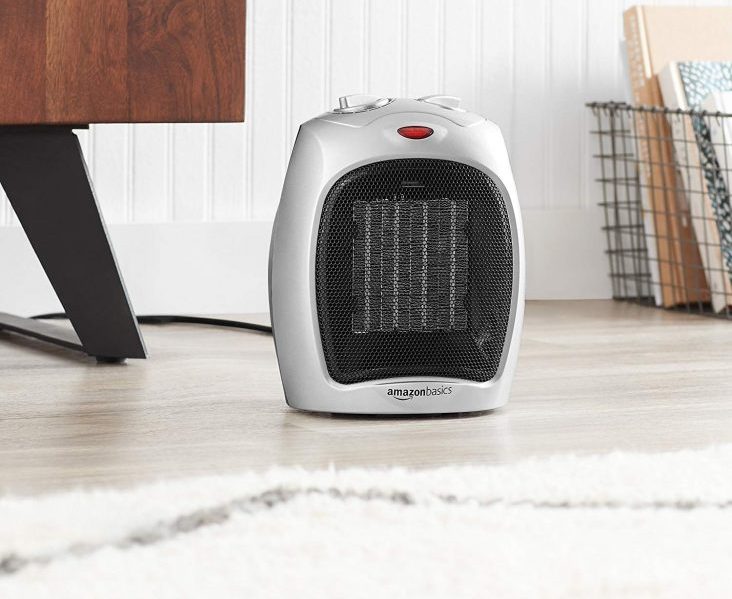
They are also known as room heaters. There are two types of electric heaters distinguished based on their portability. The two types are portable and wall-fitted space heaters.
Space heaters are considered the best if you want to heat a small room. They are also used in clinics and rooms for sick & older people.
How Do Space Heaters Work?
Most of these space heaters have a heating element that consumes electricity to heat itself. The heat produced from this heating element is circulated by a fan (or fans).
Space heaters are widely popular amongst the masses. But they are the ones who jolt us down with those hefty electricity bills.
Space heaters require a startup time for heating. Depending upon the heating element & other factors, space heaters take around half an hour to an hour to heat up a room.
Advantages of Using A Space Heater
- The initial cost of a space heater is cheaper than other electric heaters.
- They are the best for smaller rooms.
- Space heaters come with variable controls. This allows the user to change the intensity of heat accordingly.
- Once the room is heated, you can reduce the intensity of heat. Due to this, energy and, subsequently, money is saved.
Disadvantages of Using A Space Heater
- Space heaters heat air. So, if a cold draft of wind enters through the door or a window, then the temperature drops down.
- It takes about an hour to heat up the room. Until then, you must bear with the winter.
- If not utilized properly, then the electricity bill can be very expensive.
3. Oil Filled Heaters
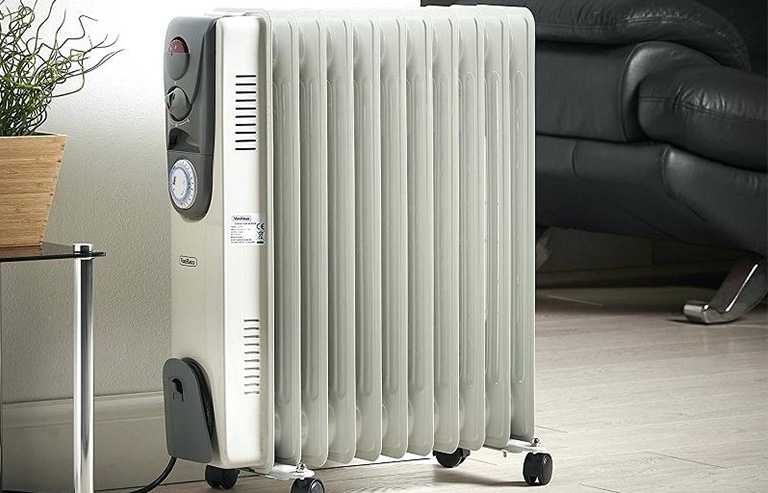
The first thing that comes to one’s mind after hearing oil-filled heaters are those old rusty heaters. Trust me! These new-age ones are nothing less than a beast! They are efficient at keeping the cost low as well as effective heaters.
Talking about their USP, they are the silentest electric heater.
How Do Oil-Filled Heaters Work?
Like any other electric heater, they utilize electricity & convert it into heat. Oil-filled heaters use an electric resistor to convert electric energy into heat energy. They come with an inbuilt radiator consisting of multiple fins.
The oil used in this heater is known as diathermic oil, a unique type of oil.
Diathermic oils are special types of oils that have a high heat capacity and boiling point. These oils absorb heat, hence act as an absorbent of heat.
The heat generated by the utilization of electricity is converted into heat, and the diathermic oil further absorbs it. The temperature of the oil increases, and the oil starts to flow. Oil flows through the panel, and this movement triggers the radiator.
The radiator then dissipates heat from its fins. Colder air is drawn subsequently, and the surrounding starts to heat. The process goes on until a constant temperature is achieved.
Oil-filled space heaters with larger radiator fins warm up rooms faster. They are recommended if children are at home, owing to their safety.
Note:
- The users of oil-filled electric heaters do not have to change the diathermic oil.
- Oil-filled electric heaters require electricity and do not run on diathermic oil. They only utilize the properties of diathermic oils.
- The larger the fins, the quicker the heating process.
Oil-filled heaters are a smart buy if you get the one with a digital timer. Heat the room for oil-filled heaters take about an hour (or even more).
If you turn on the digital switch way before you enter the room or house, then by the time you reach your destination, it will be heated. Using this technique, you can negate its disadvantages.
Advantages of Using an Oil Filled Heater
- They are highly energy efficient. Even after you switch off the device, the radiators tend to dissipate heat if the diathermic oil restores to its original state.
- They produce very little noise when compared to other electric heaters.
- No need to change the diathermic oil.
- This heater is safe to use. It has the lowest chance of catching fire as the radiator is well-sealed.
- Oil-filled heaters are portable.
Disadvantages of using an Oil Filled Heater
- The initial purchase cost is a bit higher.
- Their portability is affected due to the heavy weight of the heater.
4. Storage Heater
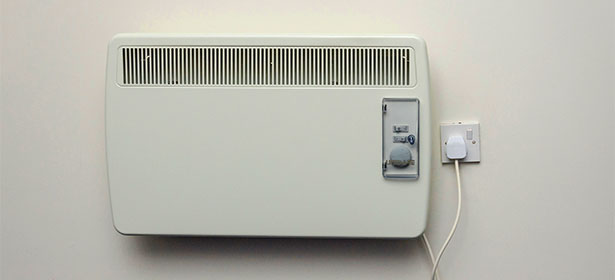
Storage heaters are also known as heat banks. In a nutshell, they store electric energy in the time frame when the tariffs of the electricity are much cheaper and consecutively dissipate the heat when the user requires or uses it.
How Do Storage Heaters Work?
It starts with storing electricity when the unit cost of the electricity is low (depending upon the nation you reside in). The electricity is stored by the thermal bricks. Else, the working is the same as the other electric heaters.
Advantages of Using a Storage Heater
- If properly utilized, the cost of electricity can be drastically reduced. They can be the cheapest possible electric heater, provided that your area has lower tariffs in each time frame.
- Most of these storage heaters come with an inbuilt thermostat that helps in effective heat dissipation.
- They are mostly silent, with very few parts producing any noise.
- Storage heaters are quite durable.
Disadvantages of Using a Storage Heater
- The expensive initial cost would mean that it will not be useful if you are one of those who will not be using this heater very often.
- The issue of overheating is also possible.
5. Fan Heaters
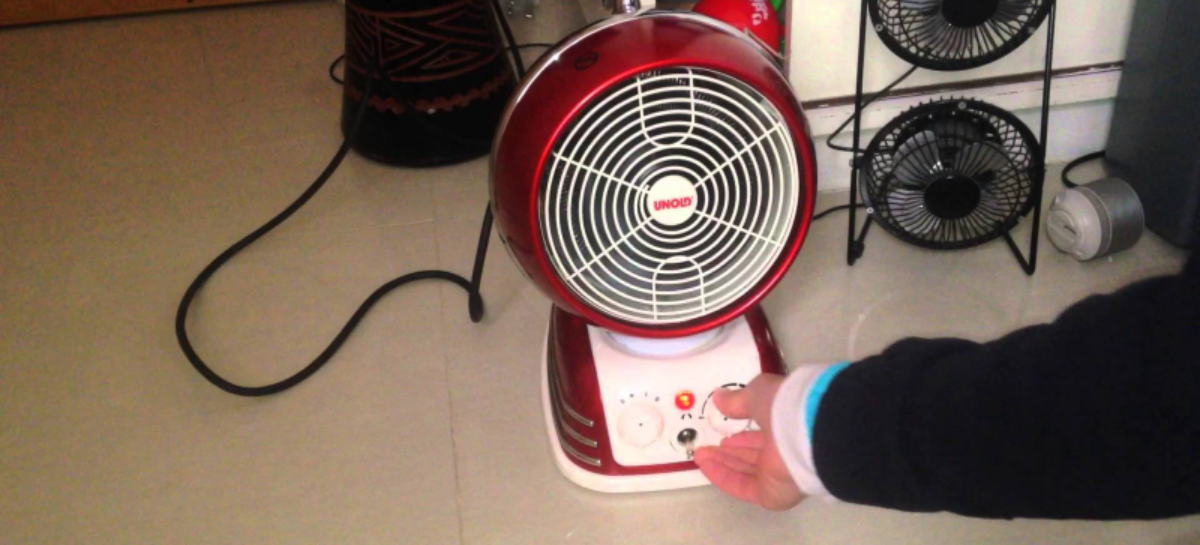
Fan heaters are simple electric heaters working on the principle of convection. It circulates warm air from the electrically heated element by the forced convection technique.
Advantages of Using a Fan Heater
- They are portable and lightweight.
- They have lesser chances of fire hazards and burns.
- Quick heating of the room is possible.
Disadvantages of Using a Fan Heater
- As the fan would be running continuously, it produces a lot of noise.
- Fan heaters can quickly reduce the oxygen and humidity levels in the room.
6. Ceramic Heaters
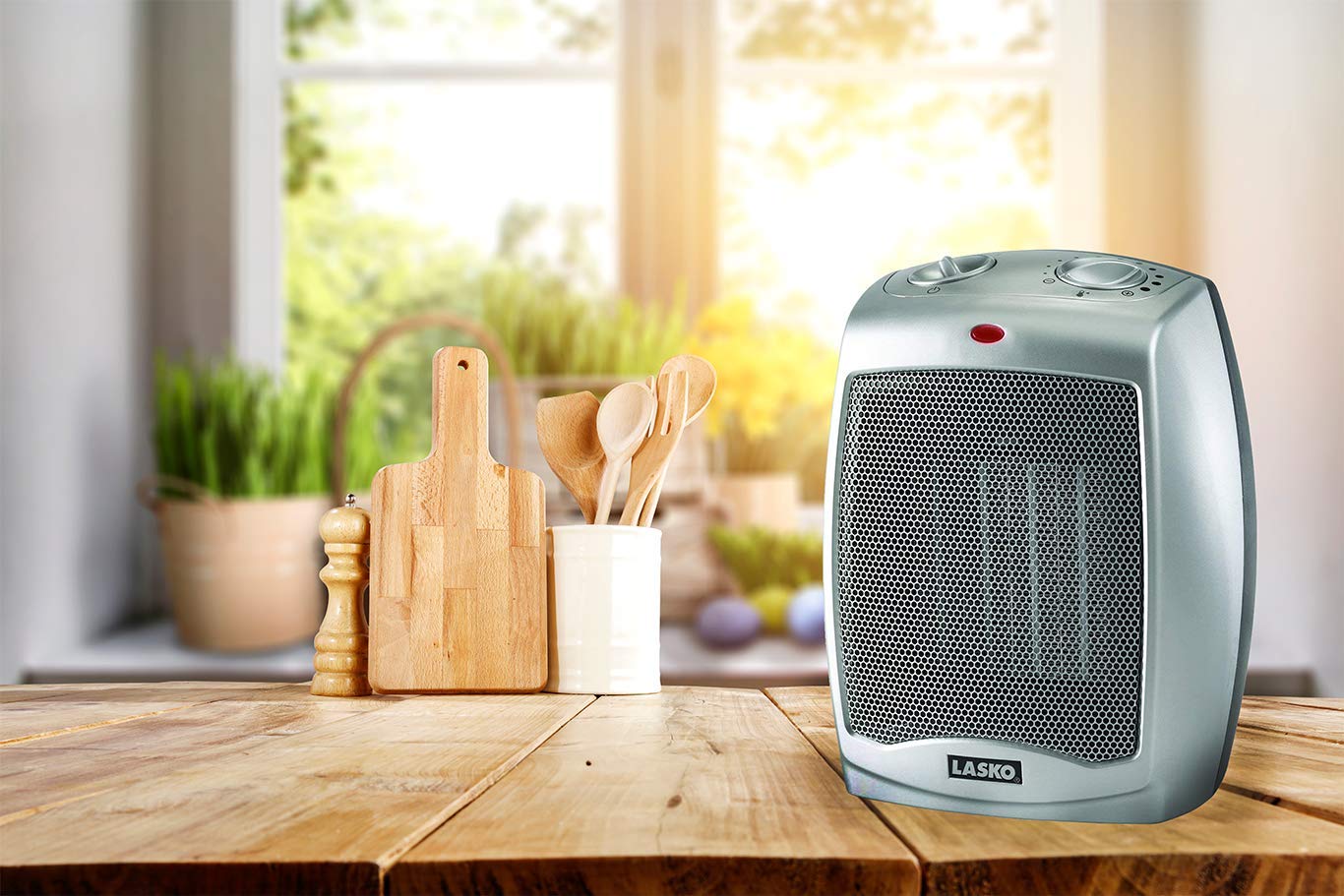
Ceramic heaters are the normal electric heaters with the only difference being that these heaters only consist of the ceramic heating element.
The ceramic heating element heats due to electric energy. It dissipates the heat energy to the air in the surroundings.
Advantages of Using a Ceramic Heater
- They are compact, portable, and lightweight.
- No fuss regarding the installation.
- They are very few chances of fire hazards, hence are one of the safest electric heaters.
Disadvantages of Using a Ceramic Heater
- If there is no fan or blower present in the ceramic heater, then it becomes difficult to heat larger rooms quickly.
Conclusion
If you are choosing an electric heater, then there are wide varieties available based on the heating mechanism, portability & heating element.
The article helps you to better understand different electric heaters with an explanation of the working of the respective electric heaters and their advantages & disadvantages.
Choosing the cheapest heater to run amongst the six electric heaters mentioned in the article would still depend upon the various parameters that the buyer must analyze.
Parameters can be variations in the electricity tariff over the time interval, size of the room, amount of time the heater would be running, and many more!

